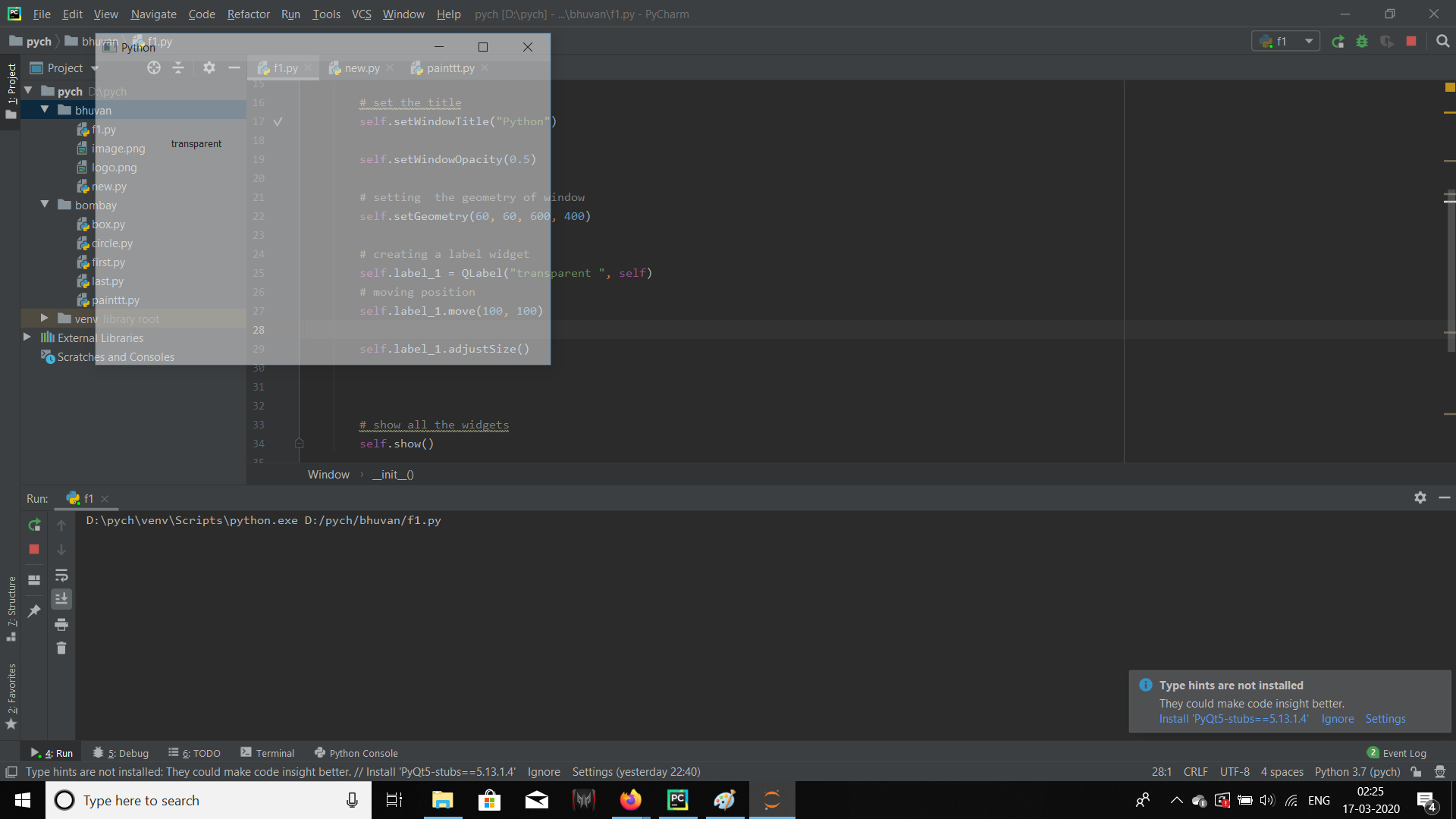Cuando diseñamos una aplicación en PyQt5, la ventana principal suele aparecer por defecto, la ventana es opaca, pero también podemos hacerla transparente. podemos hacer esto usando setWindowOpacity()el método que pertenece al QWidget class.
Sintaxis: setWindowOpacity(0.5)
Argumento: toma valor flotante como argumento: 0 para completamente transparente y 1 para opaco.
Acción realizada : Hace que la ventana sea transparente.
Código:
# importing the required libraries
from PyQt5.QtCore import *
from PyQt5.QtGui import *
from PyQt5.QtWidgets import *
import sys
class Window(QMainWindow):
def __init__(self):
super().__init__()
# set the title
self.setWindowTitle("Python")
self.setWindowOpacity(0.5)
# setting the geometry of window
self.setGeometry(60, 60, 600, 400)
# creating a label widget
self.label_1 = QLabel("transparent ", self)
# moving position
self.label_1.move(100, 100)
self.label_1.adjustSize()
# show all the widgets
self.show()
# create pyqt5 app
App = QApplication(sys.argv)
# create the instance of our Window
window = Window()
# start the app
sys.exit(App.exec())
Producción :
Publicación traducida automáticamente
Artículo escrito por rakshitarora y traducido por Barcelona Geeks. The original can be accessed here. Licence: CCBY-SA